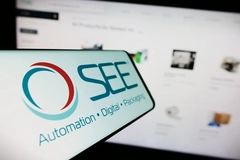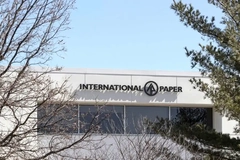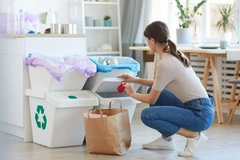“Packaging’s future is undoubtedly digital,” says Tetra Pak VP at connective platform launch

08 Apr 2019 --- Tetra Pak has launched a connected packaging platform, which will transform milk and juice cartons into interactive information channels, full-scale data carriers and digital tools. The platform is inspired by the trends behind Industry 4.0 and puts code generation, digital printing and data management at its core. It is designed to bring new benefits to food producers, retailers and shoppers, including end-to-end traceability and opportunities for brand engagement and recognition.
For producers, the new packaging platform will offer end-to-end traceability to improve the production of the product, quality control and supply chain transparency. It will have the ability to track and trace the history or location of any product, making it possible to monitor for market performance and any potential issues.
For retailers, it will offer greater supply chain visibility and real-time insights, enabling distributors to track stock movements, be alerted when issues occur and monitor for delivery performance.
For shoppers, it will mean the ability to access vast amounts of information such as where the product was made, the farm that the ingredients came from and where the package can be recycled.
“We are unlocking new opportunities for our customers to get more value from packaging than even before,” explains Ivan Nesterenko, Vice President, Cross Portfolio at Tetra Pak. “No longer is it only about product protection and functionality, it is about connectivity. The future of packaging is undoubtedly digital: this launch is a step towards a truly intelligent package and we are excited to collaborate with our customers on this journey.”
“The platform provides a unique digital identity for each carton. A unique code is placed on every package which, once scanned by a smartphone, reveals a wealth of information, for example, the product’s origin and its contents,” Nesterenko tells PackagingInsights.
Long-term gains, improved recyclability
Tetra Pak has not specified how and if the cost of its connected cartons will rise compared to non-connected cartons. However, Nesterenko fully expects participating companies to increase profits in the long run.
“Each customer has different needs. However, in the long run, this offering will save the customer money by increasing and improving direct interaction with their consumers. For example, one of our customers in Spain increased its sales by 16 percent through a scan and win campaign.”
Tetra Pak has successfully completed pilots with its customers to test the new connected package and its performance in retail in Spain, Russia, China, the Dominican Republic and India, working with beverage, juice and milk producers.
The industry will also be keen to know how connectivity might affect the recyclability of the cartons. The answer is not at all. In fact, Nesterenko believes that overall sustainability will actually be improved.
“The use of ID and QR codes does not impact our packages ability to be recycled. We see this platform as being a tool to improve recycling as consumers are able to scan their productions to understand the best recycling practices,” he notes.
Connected packaging hits the mainstream
During Packaging Innovations 2019 in Birmingham, PackagingInsights highlighted that industry experts are expecting full-scale deployments of connective packaging technologies across multiple markets in 2019. Some are expecting pharmaceutical companies to be first on the market with connective technologies such as Near Field Communication (NFC), with food and beverage markets following their lead.
The launch of Tetra Pak’s connected packaging platform sees an influential supplier push the digitization of packaging a step further and provides testament to the growing trend. Nesterenko believes that budding opportunities for collaboration in this space are responsible for the increased availability of connective packaging technologies.
“No one organization can provide the answers for wide-scale rollouts, collaboration across the supply chain is essential. Industry 4.0 technologies such as IoT, analytics and AI, have enabled Tetra Pak to broker new partnerships with a range of best in class technology providers to help customers future proof their products and optimize efficiencies. This has led not only to increased productivity, reduced costs and increased profitability, but is helping the industry work towards a circular economy,” Nesterenko describes.
In addition to industry collaboration, Cameron Worth, Founder of IoT agency, SharpEnd, believes that the increased cost-effectiveness and changes in consumer attitude are paving the way for NFC and other connective technologies.
“Three months ago you could only get NFC tags for around US$0.12 but now they can be purchased for half that. Cost reduction was one of the things holding back NFC. It’s also becoming easier to sell the idea of connective packaging to brand owners as the brand stakeholders start to shift their perceptions in favor of these technologies,” Worth tells PackagingInsights.
“The last barrier is around consumer attitude. Consumers are becoming more comfortable with technologies like Apple Pay – I think there has been a 100 percent year-on-year increase in the UK – so that will obviously help to drive better engagements in connective technologies,” he adds.
Innova Market Insights identified “Pack to the Future” as its number five packaging trend for 2019. The market specialist cites increasing consumer demand for transparency along the supply chain and the rise IoT technologies such as QR codes and blockchain as drivers behind the trend.
By Joshua Poole











